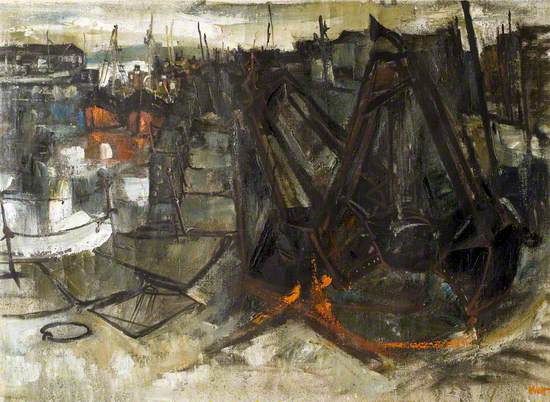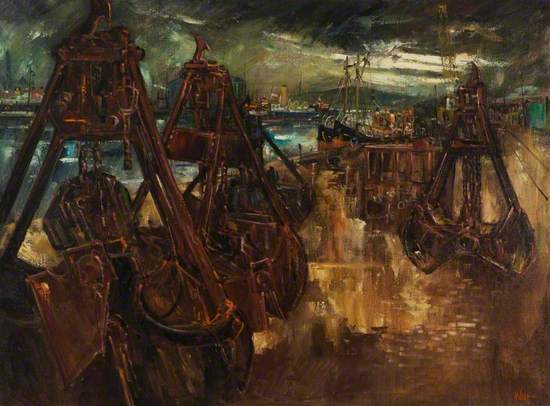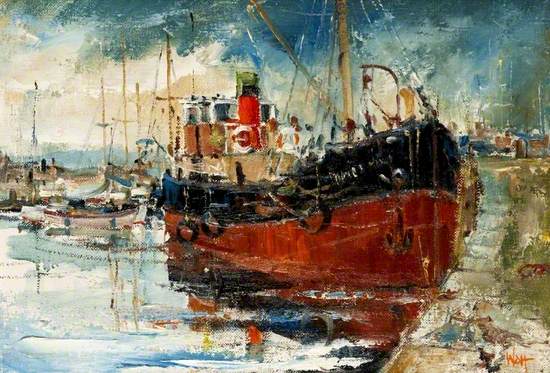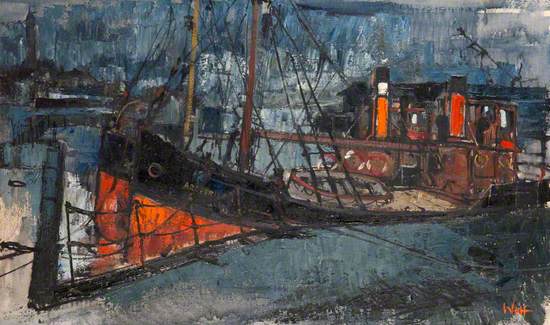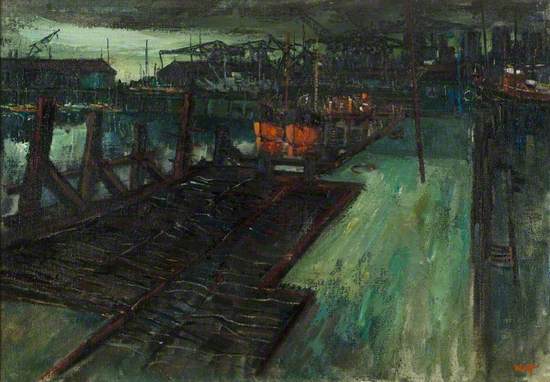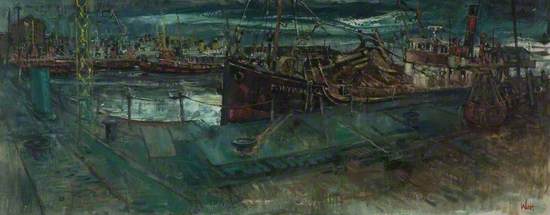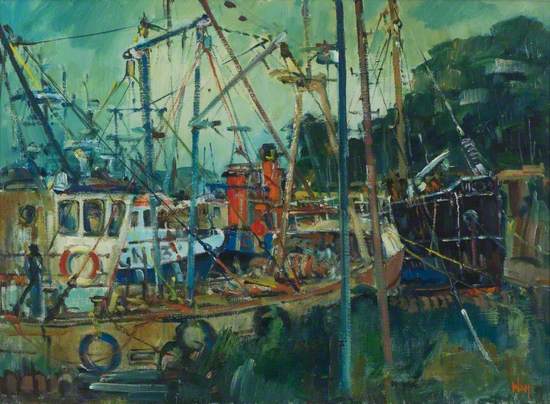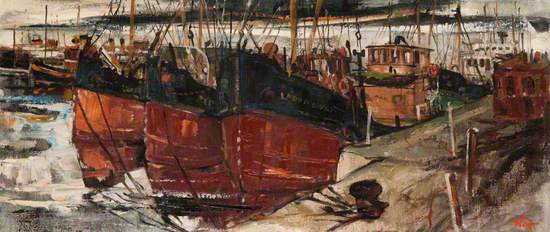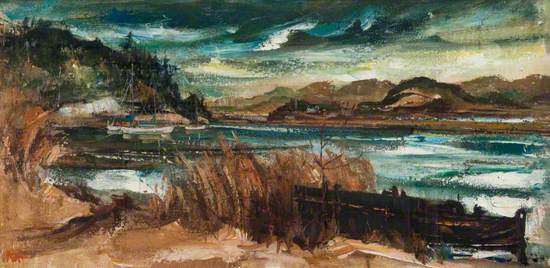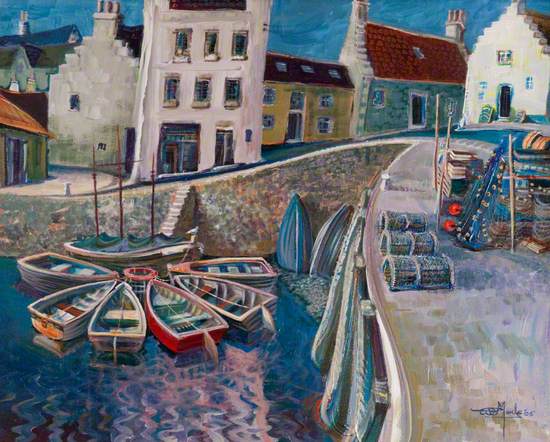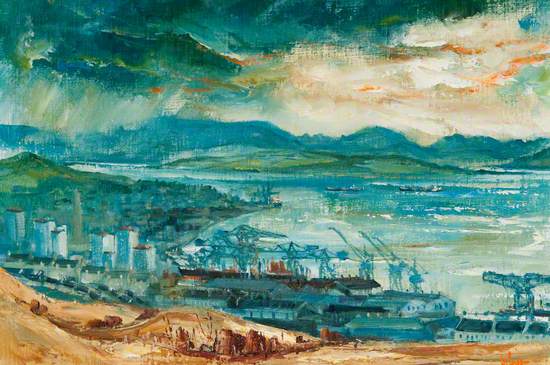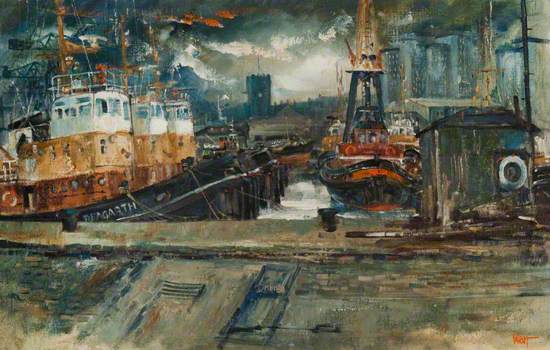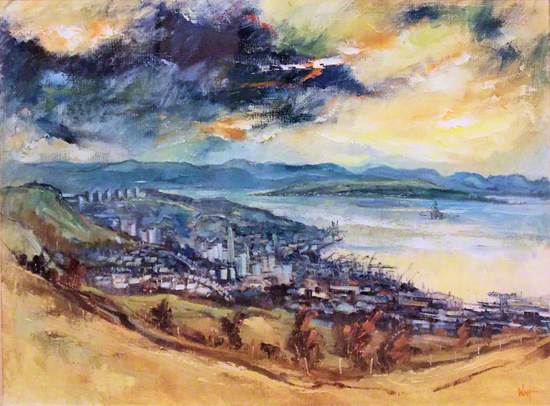James Watt is the pre-eminent Scottish maritime artist of the twentieth century and the River Clyde is his muse. We present this to compliment our current exhibition of his work to celebrate his 90th birthday, The Lost Clyde.
Born in Port Glasgow, James Watt studied at The Glasgow School of Art and has dedicated his life to recording the remarkable River Clyde and its industries. From charting the mid-twentieth century highs to the more recent lows, his work forms both a highly personal and irreplaceable historic archive of a river whose industries helped shape the modern world and personifies the notion of the artist as the ‘chronicler of change’.
Sandgrab 1969
James Watt (1931–2022)
Acrylic on canvas
H 70 x W 94.3 cm
Dumfries and Galloway Council
East India Extending 1972
James Watt (1931–2022)
Oil on canvas
H 76 x W 102 cm
Scottish Maritime Museum
‘Portway’, Victoria Harbour c.1965
James Watt (1931–2022)
Oil on canvas
H 51 x W 127 cm
Scottish Maritime Museum
James Watt (1931–2022)
Oil on canvas
H 40.7 x W 91.8 cm
The Hunterian, University of Glasgow
James Watt (1931–2022)
Oil on canvas
H 46.2 x W 101.8 cm
The Hunterian, University of Glasgow
James Watt (1931–2022)
Oil on canvas
H 100 x W 108.5 cm
University of Strathclyde
Greenock 1981
James Watt (1931–2022)
Oil on canvas
H 36 x W 51 cm
McLean Museum and Art Gallery – Inverclyde Council
James Watt (1931–2022)
Oil on canvas
H 56 x W 92 cm
McLean Museum and Art Gallery – Inverclyde Council
Greenock 1970–1980
James Watt (1931–2022)
Oil on canvas
H 90 x W 120.3 cm
McLean Museum and Art Gallery – Inverclyde Council
East India Sunday c.1965
James Watt (1931–2022)
Oil on canvas
H 40 x W 101 cm
McLean Museum and Art Gallery – Inverclyde Council
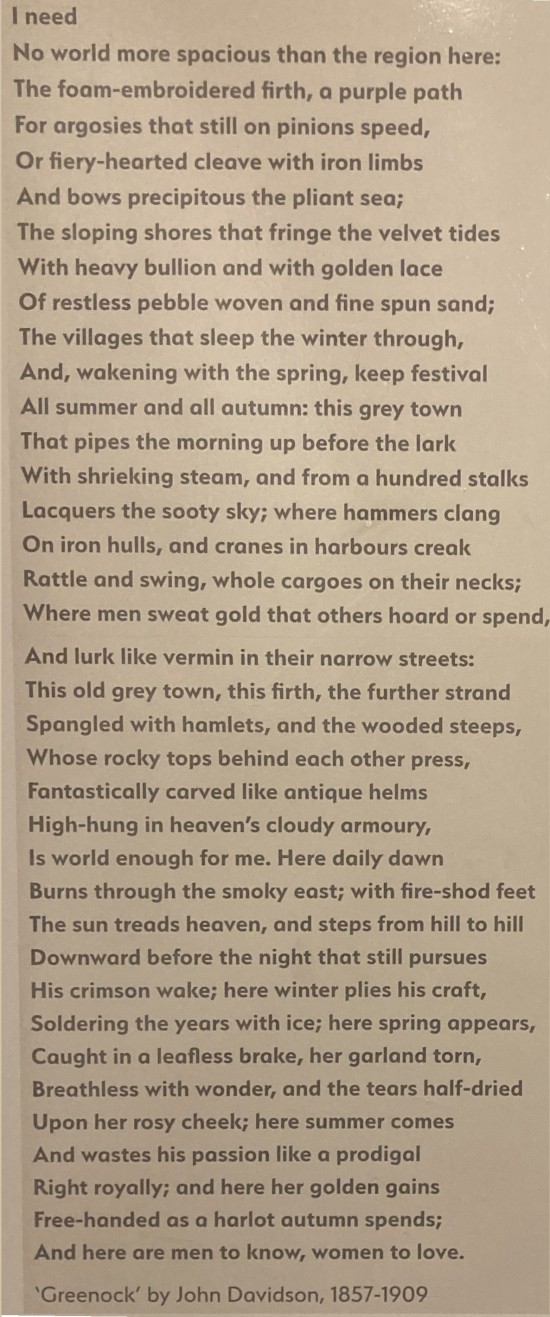
"Greenock" by John Davidson (1857-1909)
Poem chosen by James Watt for Lost Clyde exhibition
